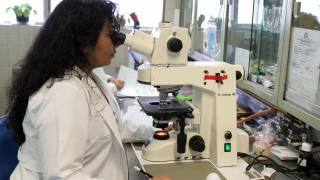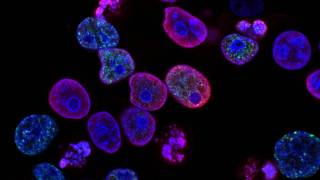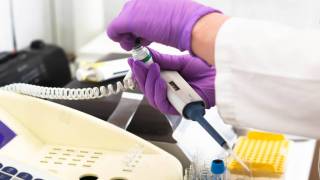Therapeutic Vaccine Candidate for Precancerous Cervical Cells Study Launched

An international study has launched to determine the effectiveness of a new therapeutic vaccine for treating women with precancerous changes on the cervix.
These precancerous lesions also called dysplasia or cervical intraepithelial neoplasia (CIN), are caused by an infection of the human papillomavirus (HPV).
Cervical cancer and CIN are well-known outcomes of an HPV infection, says the Centers for Disease Control and Prevention (CDC).
The abnormalities are asymptomatic but can be detected by standard Pap test screening and diagnosed by a colposcopy and biopsy of the affected area.
This study at Vanderbilt University Medical Center treats women with high-grade CIN with a new investigational therapeutic vaccine that targets HPV at the source of the cervical abnormalities.
This study is important since all women are at risk for cervical cancer, and HPV is the main cause of cervical cancer, says the CDC.
The study’s goal is to show the vaccine is a safe and effective alternative to surgery, which can weaken the cervix, putting patients at risk of premature delivery with future pregnancies.
If effective, this therapeutic vaccine will cause the CIN lesions to regress.
The severity of CIN is typically categorized into three grades:
- CIN1 — which is often cleared by a woman’s own immune system without any treatment — is considered low grade, while,
- CIN2 and 3 are referred to as high grade. Untreated, these high-grade abnormalities could progress to cancer over time, so surgical excision of this area of the cervix is usually recommended.
Because the development of cervical cancer is slow.
This means the progression from the first HPV infection of the cervix through the 3 grades of CIN and potentially onto invasive cancer usually takes 5 to 10 years.
And, there is minimal risk associated with delaying surgical treatment while the effectiveness of the vaccine is evaluated, said these researchers in a press release.
“My hope is that women with CIN2 or 3, especially those considering future pregnancies, will consider this option to surgical treatment,” said Howard Jones III, MD, professor of Obstetrics and Gynecology and a leader of the Vanderbilt University Medical Center study.
“We would love to avoid surgical treatment in all women if we could, especially in younger women who haven’t yet had their families,” said Dr. Jones.
Participating patients will be carefully monitored for a total of two years to evaluate regression of the lesion and to ensure the cervical abnormality doesn’t return. Three doses are given to these study participants, one dose on the day of enrollment, one 4 weeks into participation and another dose 3 months following enrollment.
Providers who have patients with high-grade squamous intraepithelial lesion (HSIL) as determined through their Pap test can refer patients for participation in the study by contacting Dr. Jones at 615-322-8072.
This study is sponsored by Inovio Pharmaceuticals.
Our Trust Standards: Medical Advisory Committee

























